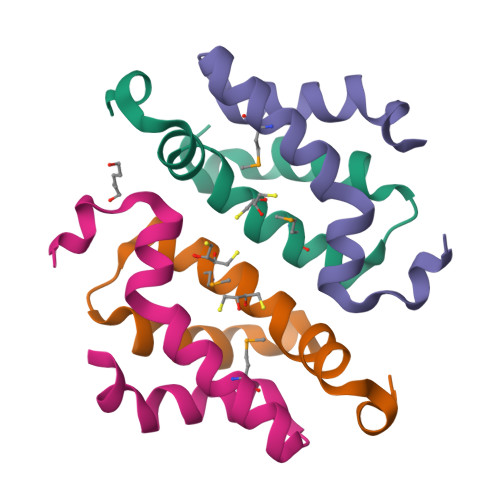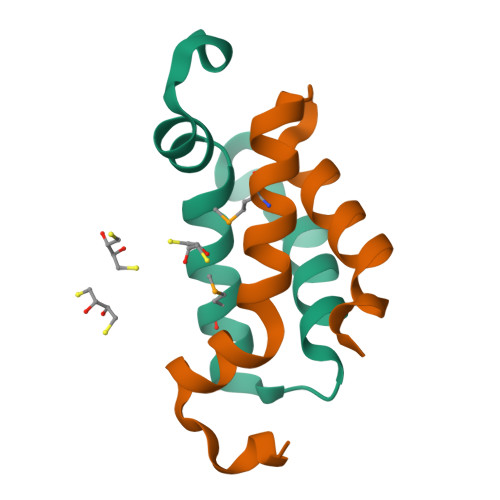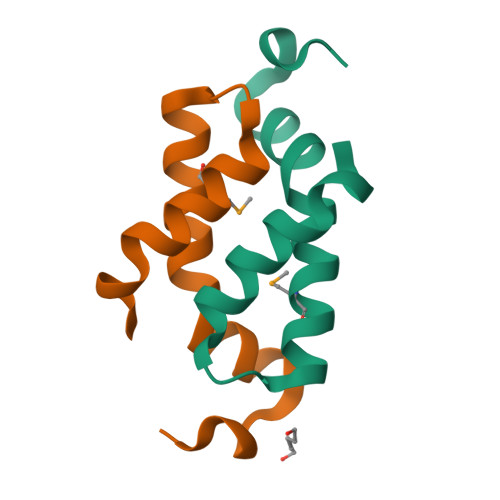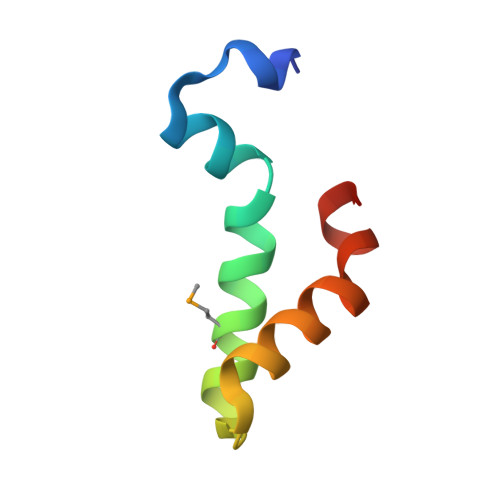Crystal structure of the C-terminal domain of human DPY-30-like protein: A component of the histone methyltransferase complex
Wang, X., Lou, Z., Dong, X., Yang, W., Peng, Y., Yin, B., Gong, Y., Yuan, J., Zhou, W., Bartlam, M., Peng, X., Rao, Z.(2009) J Mol Biology 390: 530-537
- PubMed: 19481096
- DOI: https://doi.org/10.1016/j.jmb.2009.05.061
- Primary Citation of Related Structures:
3G36 - PubMed Abstract:
The conserved DPY-30 is an essential component of the dosage compensation complex that balances the X-linked gene expression by regulation of the complex formation in Caenorhabditis elegans. The human DPY-30-like protein (DPY-30L) homolog is a conserved member of certain histone methyltransferase (HMT) complexes. In the human MLL1 (mixed-lineage leukemia-1) HMT complex, DPY-30L binds to the BRE2 homolog ASH2L in order to regulate histone 3-lysine 4 trimethylation. We have determined the 1.2-A crystal structure of the human DPY-30L C-terminal domain (DPY-30L(C)). The DPY-30L(C) structure, harboring the conserved DPY-30 motif, is composed of two alpha-helices linked by a sharp loop and forms a typical X-type four-helix bundle required for dimer formation. DPY-30L(C) dimer formation is largely mediated by an extensive hydrophobic interface with some additional polar interactions. The oligomerization of DPY-30L(C) in solution, together with its reported binding to ASH2L, leads us to propose that the hydrophobic surface of the dimer may provide a platform for interaction with ASH2L in the MLL1 HMT complex.
Organizational Affiliation:
Institute of Basic Medical Sciences, Chinese Academy of Medical Sciences/Peking Union Medical College, Beijing, China.






















